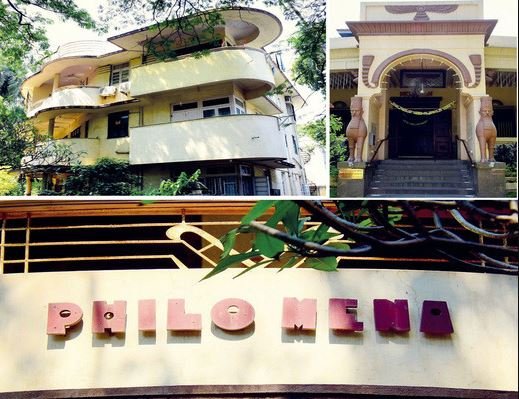DADAR PARSI COLONY: A DECO OF PLANS
HAVE A DECCO – In which we trace the city’s relationship with the architectural style

We begin at Koolar & Co. Wood paneling, and black and white tiles on the floor. With a true Deco touch, the cafe arranges itself as a corner-facing display. Step out to walk down Adenwala road with its Copper Pod trees, their flame-like flowers in full bloom, and arrive at the Five Gardens — large enclosures of Queens Flowers, Sita Ashoks, and Persian Lilacs. The trees signify the ambition of the project that is the Dadar Parsi colony — the avenues of which are lined by a handpicked selection of foliage. As you step under their shade, there is even a drop in temperature, marked by the breezy flutter of overhanging leaves.
The Deco in Dadar Parsi Colony is the epitome of clever urban planning, and a hawk’s eye attention to the arrangement of public space. Our host here, Zarine Engineer, granddaughter of Macherji Joshi, and board member of several trusts that look after the landscape of the neighbourhood, tells us the neighbourhood’s story: “It was first imagined, planned and constructed by civil engineer Mancherji Edalji Joshi in the 1920s, and was the result of a housing crisis, and the devastation left behind by the Bombay Plague.” According to Engineer, Joshi sought to build a Parsi colony that would accommodate the middle class and the lower middle class Parsis, instead of just the elite. It is thus a colony of many resources: a library; a multi-purpose hall to celebrate functions; a Madressa to train young boys for priesthood; and an impressive Agiary enclosed within the heart of the colony’s Deco residences. Engineer tells us how, by bringing together several industrialist stakeholders, Joshi crowd-sourced the funding to begin a construction of over 200 buildings, on what used to be barren land.
It is clear that Joshi deliberately marked the colony with a contemporary aspiration, and Deco was the popular language of the time. There is Philomena, its round, pink lettering in the exact geometry of the building itself: with balconies in the shape of saucers, and dusty red eyebrows that run along the street facade. It bursts through a cluster of trees, its curving white grills adding to the curvilinear nature of the balconies. Then there is Khurshed Mahal, at whose entrance is a sunburst motif, carried up by its facade of slow bends and crescent moons. Egyptian influences are spotted on the ziggurat-like pillars and the metal work of the balconies. The building’s twosided facade, one on either side, has it unfolding all along the street.
Engineer explains how many buildings were planned and modeled after European homes, and take on neo-classical elements. Many have fireplaces and dining rooms, often with dramatic plaster mouldings to decorate the ceilings, painted in gold and silver leaf. She fondly recalls the curvilinear balconies of the houses she grew up in — from which she would reach out to climb nearby trees, full of seasonal fruit. “The colony has a vision more as a result of socio-economic compulsion than communal bias,” says Engineer, and as the threat of gentrification impacts the colony, like many heritage neighbourhoods in the city, Engineer assembles meetings to protect its buildings and parks.
She explains her grandfather’s lineage, “Since I was a child, I have sat by him as he listened in on the qualms of its residents: from monkeys climbing into their windows, to trees uprooted by the monsoon.” She has now taken over the mantle, and during our short visit to her house she receives a barrage of phone calls from residents with queries or documents that she must urgently approve before they are sent off to the BMC. The Dadar Parsi Colony is marked by its proximity to lineage: and a relentless local activism that protects it from the influx of new constructions. “These buildings are like extended joint families,” Engineer says with pride, “and we will fight for them in every way that we can.”





